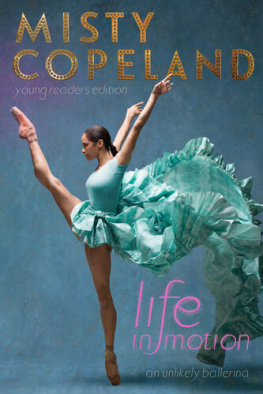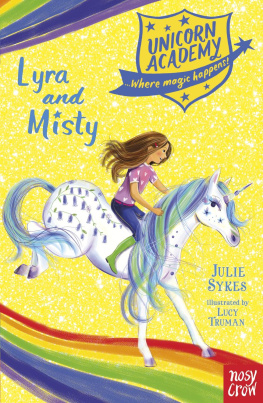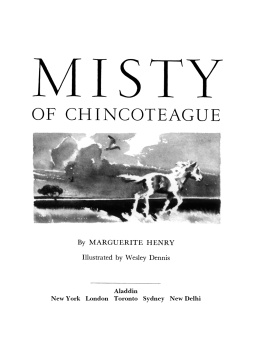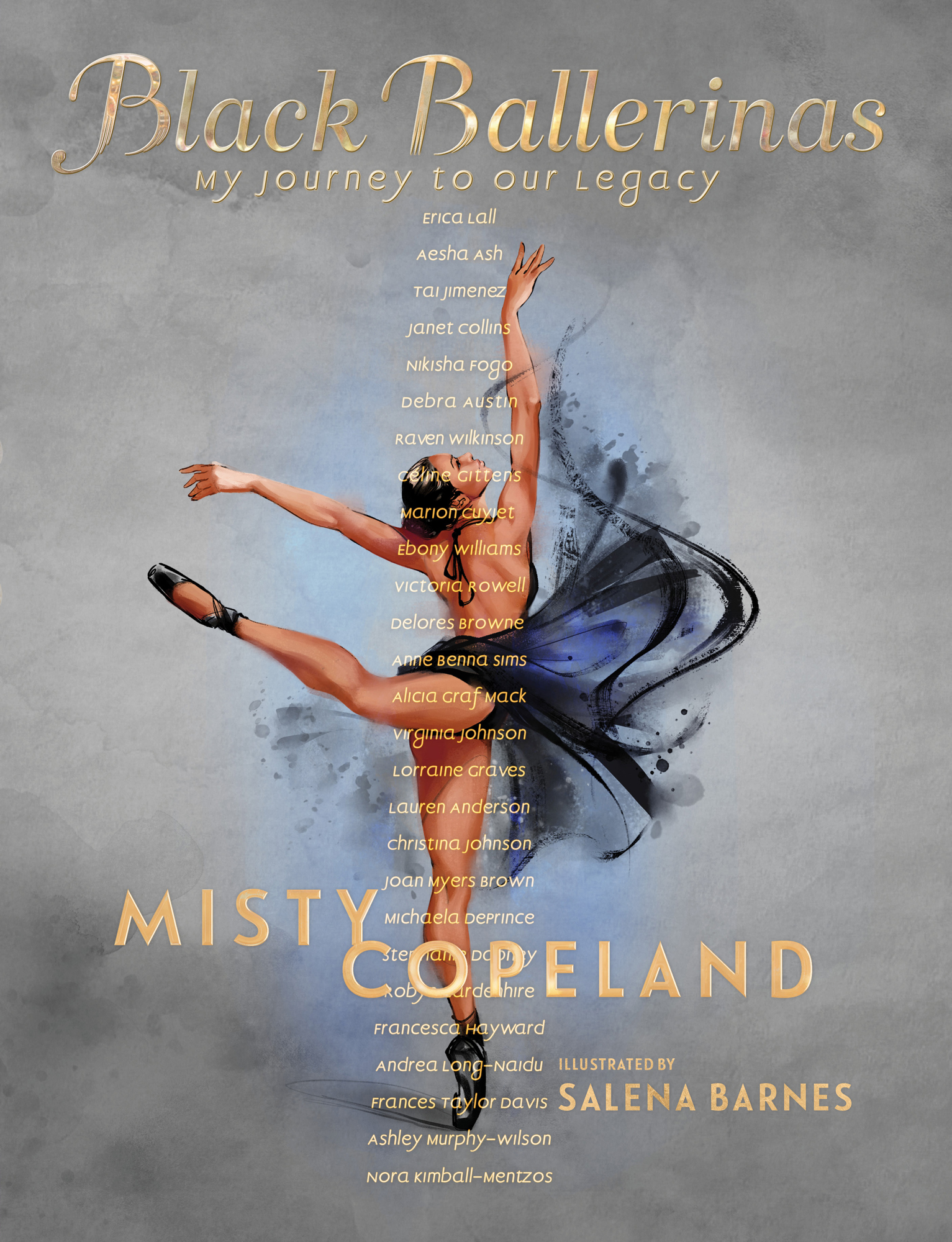Contents
Guide
Black Ballerinas
My Journey to Our Legacy
Erica Lall
Aesha Ash
Tai Jimenez
Janet Collins
Nikisha Fogo
Debra Austin
Raven Wilkinson
Cline Gittens
Marion Cuyjet
Ebony Williams
Victoria Rowell
Delores Browne
Anne Benna Sims
Alicia Graf Mack
Virginia Johnson
Lorraine Graves
Lauren Anderson
Christina Johnson
Joan Myers Brown
Michaela DePrince
Stephanie Dabney
Robyn Gardenhire
Francesca Hayward
Andrea Long-Naidu
Frances Taylor Davis
Ashley Murphy-Wilson
Nora Kimball-Mentzos
Misty Copeland
Illustrated by Salena Barnes
This is for anyone who has searched to find his or her reflection. For our forebears, who laid the foundation but could only dream of our accomplishments. And for the future of ballet, in hopes that it will continue striving to be better, to see us, to hear us, and to celebrate us.
M. C.
For my parents, my brother, and all Black and brown children, to encourage them to believe in their dreams and make them come true.
S. B.
With special thanks to Michelle Meadows for her contributions.
L ike many young women growing up, I struggled to find my place and voice in the world, but Black was the one label I confidently wore with prideit was one of the only things that was tangible and made sense in my very chaotic young life.
This was true until I discovered ballet at the age of thirteen. Ballet would provide a natural and strong identity for me, and throughout high school, I was simply known as the ballerina.
I entered the ballet world and was completely immersed in the beauty, blinded by my love and passion, and protected by my teachers, who created a bubble for me to exist in to focus solely on my training. It was a shock to my system when I joined American Ballet Theatre (ABT) four years later and I was no longer being shielded from the reality that I was a Black girl in a very white ballet world.
When I became a professional ballet dancer with ABT twenty years ago, my journey of true self-identity began. I spent the first decade of my career alone, the only Black woman in a company of eighty-plus dancers. I struggled to find my voice and define who I was in this space. I attempted to find others like me. I dug, I read, and I researched, uncovering so many of the Black ballerinas who came before medancers whose stories have not been told in earnest. So many of these women helped me to understand myself and discover my history.
Part of my mission is to bring awareness to the contributions of Black ballerinas. To give a sense of the rich histories of those who may not be documented in ballet history books, yet whose careersand legaciesare no less valuable and inspiring.
This is in no way a comprehensive list of Black ballerinas; this is a list that is personalto my journey and hopefully a starting point for others to begin to do their own research. When discussing Black and brown ballerinas, I would be remiss if I didnt acknowledge and highlight the real issue of colorism both inside and outside the Black community and how it has impacted what is presented onstage. There are varying forms of privilege in the world. I acknowledge that being biracial and/or lighter skinned is a privilege both in the world and in ballet. This privilege does not extend just to me but has dictated access and opportunity throughout our history, and so often not equitably. Black dancers are not a monolith, but it is my hope that the success of any of us will ultimately allow for the success of all of us.
In this book, Im going to share my personal stories about, connections to, and experiences with these groundbreaking women.
Here are intimate snapshots of my discovery of and relationships to these women. I am infinitely grateful for their legacies. This is my bow to these amazing dancers.


Whats wonderful about being a ballerina is being able to tell a story without saying a single word.
Lauren Anderson

(born 1965)
I can draw a direct line from Lauren Anderson to my own existence as a Black ballerina. I was seventeen years old the first time I saw Lauren, when she graced the cover of Dance Magazine in 1999. I was stopped dead in my tracks. Her dark-hued skin illuminated the page and filled me with immense pride. I think the impact of her image on me was more than I could comprehend at the time. Because of mainstream standards of beauty, and the weight associated with being a dark-skinned woman in our society, it was an anomaly to see her beauty in all its glory representing the very white and exclusive ballet world.
With all the excitement I felt, at the same time it hit me that I had been missing an important piece of classical ballet history. As a pre-professional ballet student, I had never before seen a Black ballerina on the cover of a dance publicationand it would change everything for me.
Lauren has been a mentor and friend of mine since we met while American Ballet Theatre (ABT) was touring through Texas in 2006, the same year Lauren retired from the stage. With all of the beautiful experiences weve shared over the years, the most incredible was in June 2015, when Lauren presented me with flowers during my bows at the Metropolitan Opera House after my New York City debut as the lead in Swan Lake. I was overwhelmed with love, support, and the significance of that historical moment. Lauren was the first Black ballerina to dance the lead in Swan Lake with the Houston Ballet, and that moment on the Met stage was a passing of the torch to me, the first Black ballerina to dance the lead in Swan Lake with ABT.
Laurens journey in the ballet world began at the Houston Ballet Academy. When her mother took her to see Dance Theatre of Harlem, Lauren was inspired by the first Black ballerina she ever saw perform: Virginia Johnson.
Another turning point in her life occurred when Ben Stevenson, Laurens mentor, and then artistic director of the Houston Ballet, cast her in the lead role in Alices Adventures in Wonderland. When Lauren asked him why she had been chosen for a role that had traditionally gone to white ballerinas, he answered, Darling, youre a dancer and dancers dance. The only color in art is on a canvas.
Lauren danced with the Houston Ballet from 1983 to 2006. In 1990 Lauren became the first African American to be promoted to principal dancer at the Houston Ballet. But her groundbreaking success wasnt universally accepted. Lauren found out years later that her company had shielded her as much as possible from racist remarks, hate mail, and even death threats.
And in her current role as program manager in the Houston Ballets Education and Community Engagement program, she is helping create more firsts, like our respective












 (born 1965)
(born 1965)